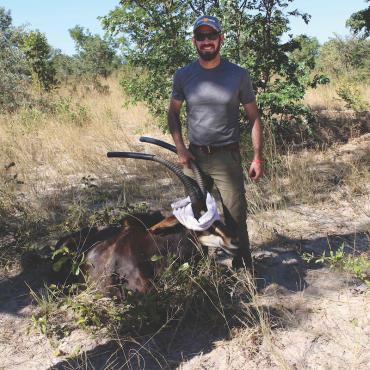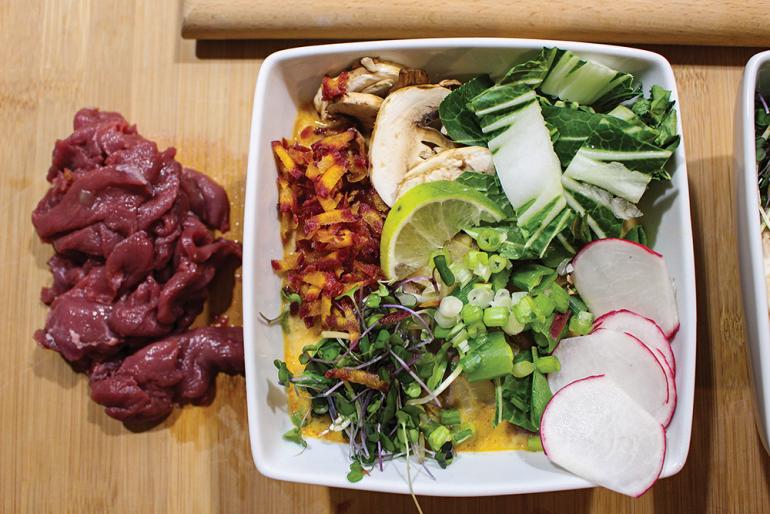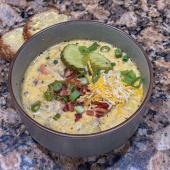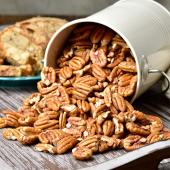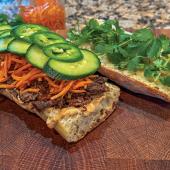Are You Pho Real?
A wild-game belly-warmer.
Several years ago, I elected to sacrifice texture for flavor when exploring the culinary opportunities of wild game. While it may sound treasonous to those tabling that trophy piece of tenderloin or backstrap for exclusive audiences, there are equally flavorful pieces of meat one should identify.
Wild game has a taste that reflects its athletic and natural origin. It lacks the interstitial fat appreciated in domestic beef and contains more hemoglobin and myoglobin, essential oxyphilic proteins that enable the animal to survive in a natural environment. The taste of wild game should be celebrated and not denigrated; perhaps we should reexamine our affinity for fatty, lazy meats.
When I hear the word “gamey,” I think of three violations that may have occurred during the laborious process that unfolds between getting the animal from the field to your plate. First, the carcass was not properly cared for in the field. Second, the meat was overcooked. And lastly, and most common, the meat was not properly groomed of connective tissue, fat, or lymphatic chains.
To thwart these violations, the hunter-cook must pay heed to a few simple rules:
1. Meat care starts immediately. Cool the carcass, keep it clean, and let it breathe.
2. Don’t be too quick to grind it. Take time to expose the lean meat beneath the connective tissue. The steaks behind the butcher window are the result of identifying and cleaning a whole muscle.
3. If you’re going to grind it, still groom it of connective tissue, fat, or lymphatic chains.
4. Do not overcook! This is a catastrophic error that cannot be undone.
5. Do not cook cold meat. Let it come to room temperature or you’ll sweat out the juices.
The recipe provided does not require a specific cut of meat. They are a unique way to display and enjoy dishes using meat that may have otherwise been ground or tossed into the scrap pile.
Bozeman Curry Pho
A local spin on a Vietnamese staple.
Ingredients
Quarter-pound of lean meat at least one inch thick (per person). I enjoy using lean muscle from anywhere in the shoulder or abdominal complex—cleaned of all connective tissue, fat, or lymphatic chains.
2 tbsp. olive oil
2 shallots, diced
3 cloves of garlic, diced
Salt & pepper
1.5 inches of ginger, chopped
1 stalk lemongrass, chopped
2-4 tbsp. red curry paste, depending on preference
1 tbsp. brown sugar
3 cups broth of choice
2 cans coconut milk
2 tbsp. lime juice
2 tbsp. fish sauce
Rice noodles
Vegetables for topping—e.g., basil, chopped bok choy, sliced mushrooms, bean sprouts, edamame, sliced radish, chopped red pepper, sliced green onion, shredded carrot
Cayenne pepper to taste (optional)
Cooking Instructions
1. Slice meat as thin as possible. Paper-thin. Thin slices hide the chewy nature of the meat. It helps to slice when it’s very cold. Once sliced, cover and place in the refrigerator.
2. Prepare vegetables and place in the refrigerator.
3. Heat olive oil in heavy-bottomed Dutch oven. Sauté shallots and garlic until aromatic.
4. Add in the chopped ginger and sauté until aromatic.
5. Add in chopped lemongrass. Cover and let sweat on low heat for 5-10 minutes.
6. Increase heat to medium. Stir in half of the curry paste until distributed (1-2 tbsp).
7. Add ingredients to make broth (broth, coconut milk, lime juice, fish sauce, brown sugar, remaining curry paste).
8. Cover and cook over medium heat for 20 minutes to let flavors combine. Uncover and reduce to desired thickness.
9. Meanwhile, cook rice noodles as instructed.
10. Add salt, pepper, cayenne, or curry paste to the broth to taste if desired.
Serving Instructions
1. Place vegetables on a serving dish in the center of the table. Bring the broth to a roiling boil.
2. Add rice noodles to each bowl. Add the thinly-sliced wild-game meat to the top of the noodles.
3. Pour hot broth over the top of the meat and noodles, making sure to cover the meat and noodles entirely. The heat of the broth will cook the meat.
4. Let each person add their desired vegetable toppings to the top of the broth. Serve with chopsticks and a spoon. Enjoy.
Zach Mills has hunted and prepared wild game for audiences in the Greater Yellowstone Area for 10 years and has authored several articles on wild game utilization. He prefers his meals cooked on an open fire, his clothes ripped, and his beard untamed.


